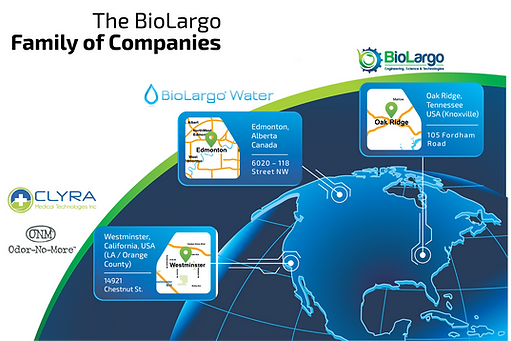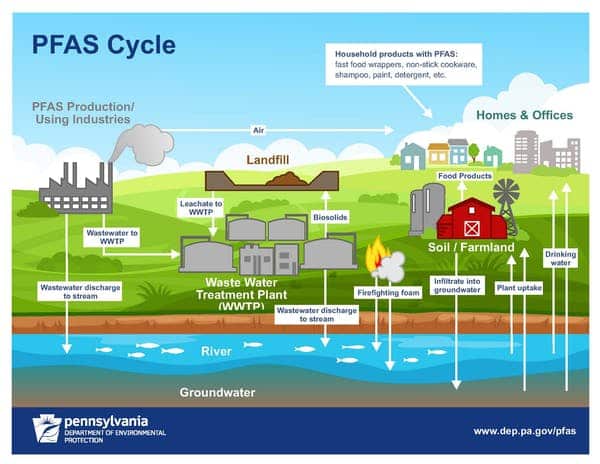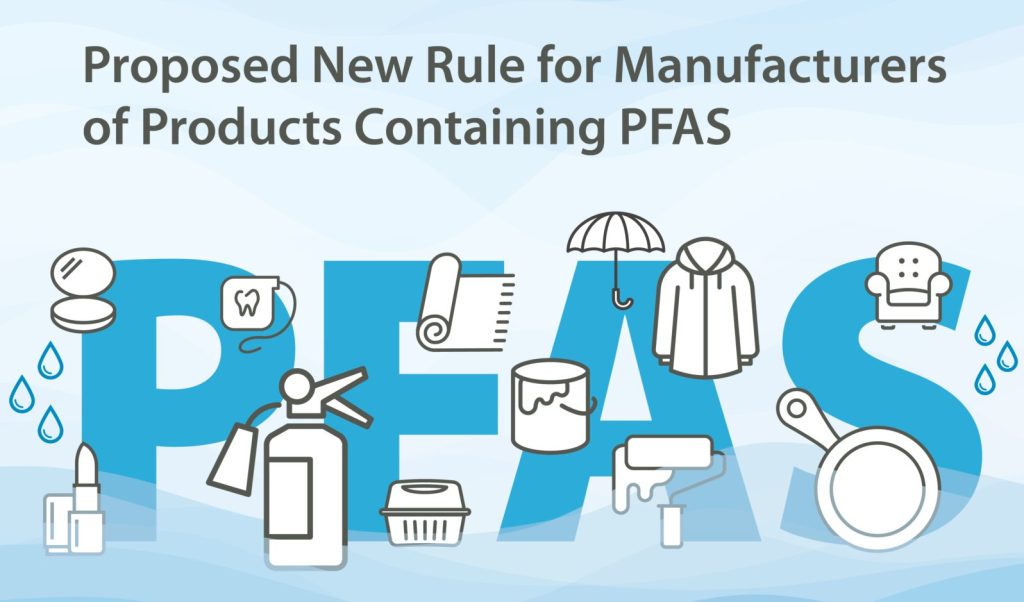Our first article on the BLGO series is an introduction to get to know what Biolargo is about, areas of expertise and overall scope of company. In the coming weeks we will dig deeper into BLGO with technical analysis, charts and price per share valuations.
BioLargo Inc Stock Price Today | OTC BLGO Live Ticker – Investing.com
Biolargo (OTCQB: BLGO) is a U.S. environmental engineering group dedicated to developing and commercializing scalable, innovative platform technologies to solve persistent environmental problems, notably PFAS contamination and VOC emissions; and to improve water and wastewater treatment, air quality control measures, and human infection control through a diverse range of patents and products across four subsidiaries:

- BioLargo Water’s Advanced Oxidation System (AOS) – Flagship product
- BioLargo Engineering, Science, and Technologies’ Aqueous Electrostatic Concentrator (AEC) – flagship product
- ONM Environmental’s CupriDyne Clean Industrial Odor and VOC Eliminator – flagship product
- Clyra Medical Technologies’ various wound-care products
This article will focus exclusively on BioLargo’s AEC product that eliminates PFAS, or per- and polyfluoroalkyl substances, from America’s drinking water. PFAS have been staples in American industrial production since the 1940s beginning with DuPont’s groundbreaking Teflon technology that has since expanded its water-, grease-, and stain-resistant properties to personal care items, fabrics, packaging materials, and fire-retardants.

PFAS are also colloquially referred to as “forever chemicals” as they are impervious to natural degradation and do not become inert over time. PFAS remain active contaminants once leeched into water, soil, or air. Data from peer-reviewed medical studies have found varying concentrations of these chemicals present in most humans’ bloodstreams, contracted primarily through drinking water but also likely in air and in the soils of harvested foods. Low concentrations of PFAS have been linked to human cancers, vaccine immunity, high cholesterol levels and blood pressure, decreased fertility, and low birthweight.
 PFAS are neither a novel nor fleeting environmental problem. U.S. industries have been well aware of their dangers for over 80 years while underreporting or misrepresenting their impra. States including Minnesota, Wisconsin, and Maine, in concert with the Environmental Protection Agency (EPA), have issued lawsuits against certain manufacturers; industry advocacy groups have as well in Texas.
PFAS are neither a novel nor fleeting environmental problem. U.S. industries have been well aware of their dangers for over 80 years while underreporting or misrepresenting their impra. States including Minnesota, Wisconsin, and Maine, in concert with the Environmental Protection Agency (EPA), have issued lawsuits against certain manufacturers; industry advocacy groups have as well in Texas.
Industrial giant 3M recently pledging its discontinued manufacturing of PFAS before 2026, other producers could follow suit, underscoring a joint effort from both public and private entities to solve an environmental problem that can cost some states over $1 billion for just removal and cleanup.
More municipalities with the backing of the EPA will continue to file suits against private businesses for industrial waste violations–or serious ethics breaches–with remediation extending beyond just cleanup and removal: some corporations could likely incur hefty health care reparations, punitive damages, and legal costs related to the effects of chemicals at advisory thresholds of parts per trillion.
Beginning in 2023, the EPA will begin wide-scale regulatory testing of public water systems to document PFAS concentrations as part and parcel of its strategic roadmap to PFAS removal.
Aggregated data will certainly drive legislative proposals to ban PFAS production and eliminate current contaminants under the Safe Drinking Water Act (via the U.S. National Defense Authorization Act), specifically via the Unregulated Contaminant Monitoring Rule—or UCMR—whose fifth iteration commenced in 2022 on a new five-year cycle. UCMR 5 represents the most expanded EPA policy continuation by targeting 29 different PFAS chemicals (along with lithium) and their concentrations in public water systems, with eventual expanded application to air and soil testing.
 After spending 2022 surveying public sentiment through a series of open forums, the EPA will begin 2023 conducting tests on over 10,000 public water systems nationwide for PFAS concentrations through 2025, with data disclosures following in 2026. Potential legislation recommendations will follow but could likely start appearing in late 2024.
After spending 2022 surveying public sentiment through a series of open forums, the EPA will begin 2023 conducting tests on over 10,000 public water systems nationwide for PFAS concentrations through 2025, with data disclosures following in 2026. Potential legislation recommendations will follow but could likely start appearing in late 2024.
Aside from ongoing EPA sampling and assessment, the agency intends to evaluate available and scalable PFAS-removal technologies and methods using combinations of heat, chemistry, and biology; and processes including reverse-osmosis and ion-exchanged resins.

BioLargo’s proprietary AEC technology, however, uses electrolysis to filter 99.9% of PFAS compounds through an advanced membrane system, proving less resource-intensive, more energy-friendly, and more waste-efficient, lessening disposal costs shouldered by municipalities. BioLargo’s advanced systems generate considerably less PFAS-laden waste compared to existing methods, translating to fewer greenhouse gas (GHG) emissions upon waste incineration. Moreover, the company’s advanced filtration technologies preclude the need for bulky and intrusive media, or for costly retrofitting of common water treatment infrastructure.
 Ultimately, there is little a person can do to avoid PFAS exposure considering their pervasiveness. As public health concerns remain a force for policy change, adoption of regulatory policies and passage of legislation will continue unabated, experiencing less pushback than laws characterized by a “green agenda,” and thereby highly politicized and inevitably hobbled by partisanship.
Ultimately, there is little a person can do to avoid PFAS exposure considering their pervasiveness. As public health concerns remain a force for policy change, adoption of regulatory policies and passage of legislation will continue unabated, experiencing less pushback than laws characterized by a “green agenda,” and thereby highly politicized and inevitably hobbled by partisanship.
The agency’s 2021 – 2024 PFAS Strategic Roadmap outlines its three-pronged approach to this problem: to research, restrict, remediate. We are presently in the first stage but expect to see this year forecasts signaling the second stage that will generate private industry partnerships, with the final stage comprised of accelerated cleanup efforts to remarkable scale, underscoring the agency’s repeated emphasis on holding industries in violation fully accountable.
Various industries’ prior skirting of federal scrutiny or oversight, paired with the known human health impacts from PFAS exposure, will help the EPA to enact most or all related policy proposals, translating into increased budgets for advanced testing and cleanup on top of continued authority.
The EPA’s 2022 public outreach success led to a strategic partnership between private citizens and a public agency, representing a rare alliance with sufficient influence to accelerate the development and implementation of advanced waste-management systems. As the EPA will evaluate PFAS-removal technologies while it samples public water systems, federal contract talks with private waste-management companies will soon follow—a boon to any listed company and its investors. Additionally, such administrative support and advocacy for the private sector and citizen both improves the EPA’s brand and certifies their dominion.

BioLargo represents a business the EPA needs for the agency to achieve its regulatory ambitions and what industries require as more move to reduce or eliminate PFAS production. An increased sales presence at tradeshows and leadership’s frequent media appearances will pay off in dividends and unlock more of the company’s true value. The company’s multitude of patents across different business divisions reflects its established success and proven potential, its technologies easily integrating into existing water treatment infrastructures. Alternative PFAS-removal methods are still in their infancy, cannot be reasonably scaled at the present; or are more environmentally unfriendly, resource- and energy-intensive, or cost-prohibitive.
The company’s recent Board of Director additions fortifies an impressive group that will certainly accelerate BioLargo’s label and products, generating higher financial outputs that will continue the company’s streak of consecutive positive quarterly earnings.
Investors will as well help fast-track the development and implementation of advanced PFAS removal technologies, especially those leveraging ecofriendly processes akin to BioLargo’s AEC technology. Financial and commercial highlights, product presentation deck, company news updates are available and represent essential pieces in all market due diligence.

